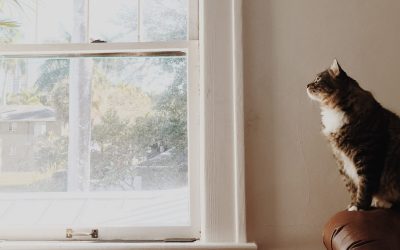As energy efficiency and occupant wellness become the focus of our buildings, daylighting is front and centre in the creation of sustainable, healthy environments. Building owners want to know how to strike the balance between allowing the benefits of natural light into commercial and residential spaces while avoiding the unpleasantness of overheating, glare, and fading.
There are several ways to address these questions; high-performance window film and exterior shade systems both control the impact of the sun’s rays through windows, for improved comfort, lower utility bills, and reduced energy usage. Some systems, however, have considerable drawbacks that need to be considered before making a final decision.
Exterior Shade Systems
Exterior shade systems manage the amount of direct sunlight that reaches the windows. A variety of systems are available. They consist of overhangs, vertical fins, exterior louvers, and blinds that are affixed to the exterior of your building. Some have automated features, that enable to system to retract or tilt based on outdoor weather conditions.
The advantages to an exterior shade system are heat and glare reduction in the windows nearest the system, without the reliance of lowering window shades or closing blinds. Some natural light still gets through, though considerably less than without the physical window coverings.
The disadvantages of exterior shade systems are the high installation costs, altered aesthetic, and fees for ongoing maintenance associated with retro-fitting a commercial building or residential home.
The disadvantages are the high installation costs, altered aesthetic, and fees for ongoing maintenance associated with retro-fitting a commercial or residential building with an exterior shade system. In the case of fixed overhangs or fins, this style won’t solve solar heat gain problems entirely. For example, an overhang will provide shade for a south-facing window in the summer, but won’t have any effect on blocking low afternoon sun from entering a west-facing window.
Exterior shade systems are fixed, deflecting sunlight during the cold months when sunlight (a free source of warmth) is desirable.
High Performance Window Films
Like exterior shade systems, high-performance window film reduces hot spots and glare while allowing for access to natural light. Unlike exterior shade systems, window film is applied directly to all windows, evenly reducing the impact of UV rays and solar heat gain. Solar control window films provide year-round energy savings, as it reduces solar heat gain in the summer and thermal heat loss in the winter.
Window film doesn’t alter either the building’s exterior profile and aesthetic, or impede views from the inside out. Compared to exterior shade systems, window film is affordable to install, and because it’s applied to the inside of the windows, it requires virtually no maintenance.
If you want to save energy costs, window film has been shown to improve the insulating capacity of existing commercial windows by up to 92%. High performance films transform single-pane windows to have the same insulating performance as double-pane windows, while providing double-pane windows with the same insulating performance as triple-pane windows.
Have you been considering ways to reduce your energy expenses while maintaining the aesthetic of your building? Be in touch with us anytime, we would love to go over your options with you.



